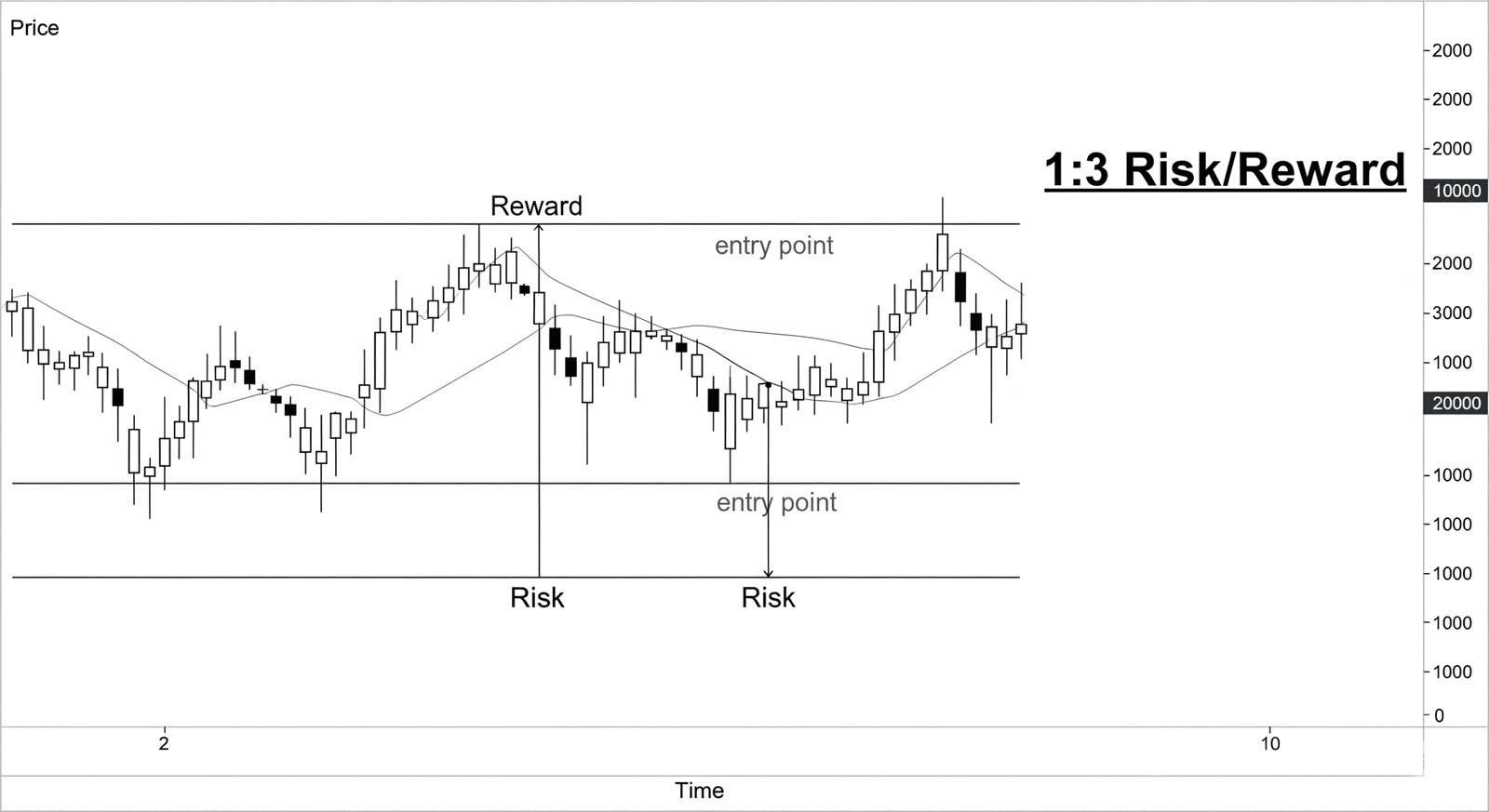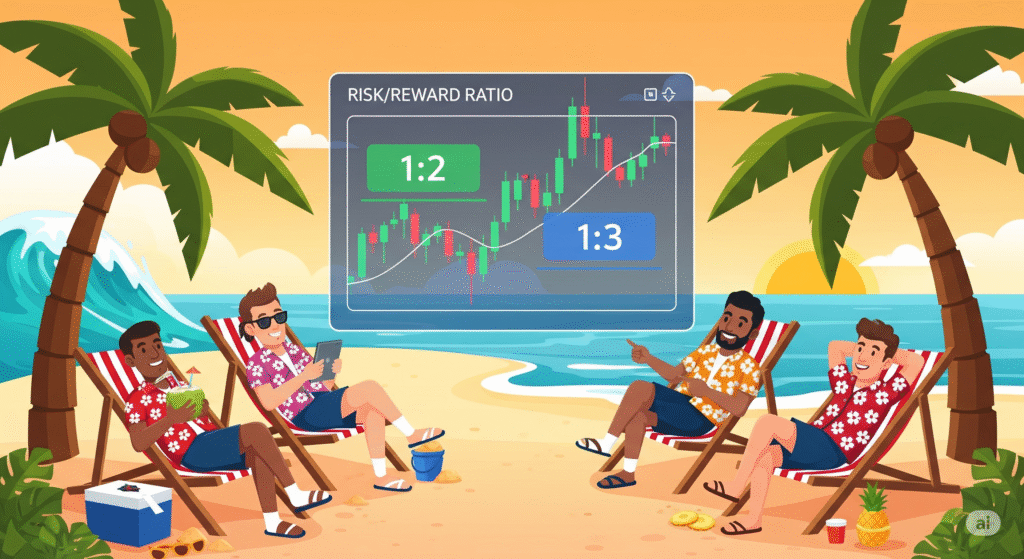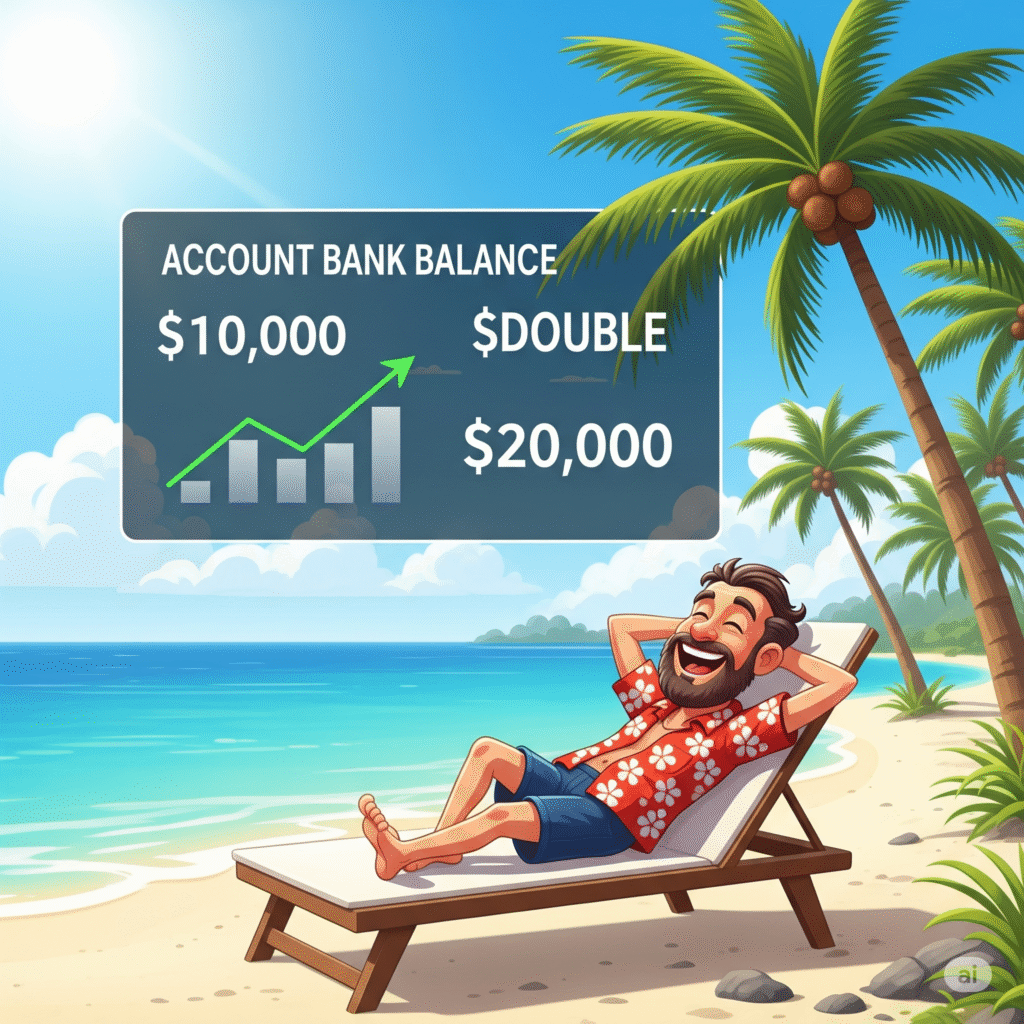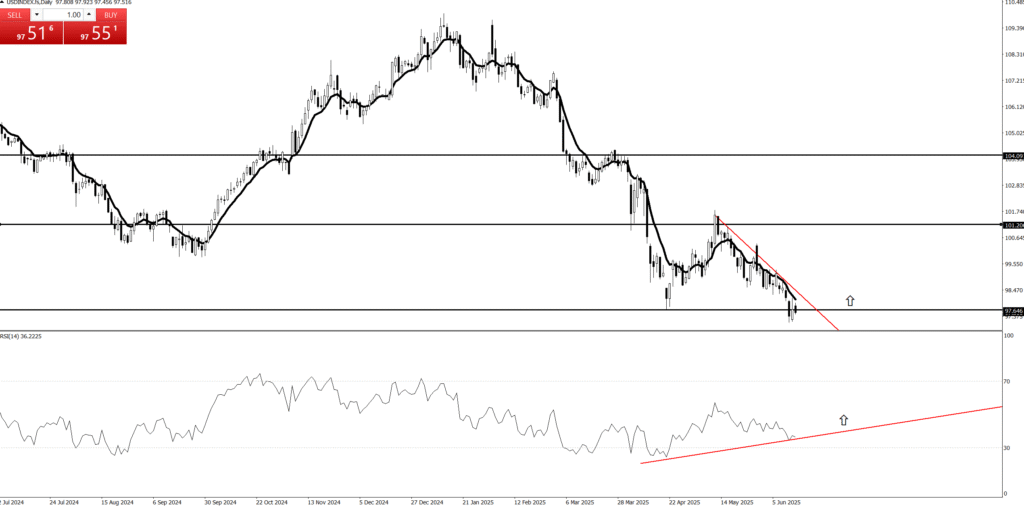7. The Story of the Inside Bar


Alright, gather ’round, aspiring market adventurers, and let’s talk about the holy grail of trading sanity, the secret sauce to not blowing up your account like an ill-fated fireworks display on the Fourth of July in Barcelona: the Risk/Reward Ratio!
Imagine you’re at a ridiculously fancy buffet (it’s Friday, July 4th, 2025, after all, and we’re feeling celebratory in sunny Barcelona!). You see two trays:
Tray A: Contains a single, slightly bruised olive. If you eat it, you get one point. But, oh no! If you don’t like it, you lose one point.
Tray B: Holds a glistening, perfectly cooked lobster tail. If you eat it, you get three glorious points! But, if it turns out to be secretly made of rubber (hey, it’s a fancy buffet, but still!), you lose one point.
Which one do you go for? If you’ve got half a brain and an appetite for success, you’re eyeing that lobster tail! Why? Because the potential deliciousness (reward) far outweighs the risk of a rubbery bite (risk)!
The Risk/Reward Ratio: Your Trading Buffet Guide!
In trading, the Risk/Reward Ratio (often shortened to R:R) is simply a way to measure how much you stand to gain on a trade versus how much you stand to lose if it goes wrong.
It’s expressed like this: 1:X (e.g., 1:2, 1:3, 1:5)
The “1” always represents your Risk (how much money you’re willing to lose, defined by your stop-loss).
The “X” represents your Reward (how much money you expect to gain, defined by your take-profit target).
Think of it as your Trade-Off Meter:
1:1 Ratio (The “Meh” Meal): You risk $100 to potentially make $100. It’s like flipping a coin for dinner. Not very exciting, is it? You’ve got to be right 51% of the time just to break even after commissions. BORING!
1:2 Ratio (The “Smart Snacker”): You risk $100 to potentially make $200. Now we’re talking! This means for every dollar you put on the line, you’re aiming to pull back two. Even if you’re only right 40% of the time, you can still be profitable! This is like ordering a tapas platter where even if one dish is a bit bland, the others make up for it.
1:3 Ratio (The “Feast Finder”): You risk $100 to potentially make $300. Woohoo! Now you’re getting serious! For every buck you put on the line, you’re hoping for three back. You could be wrong 60% of the time and still make money! This is like finding a Michelin-star restaurant that gives you free desserts if you don’t like the main course. Legendary!
1:5, 1:10, and Beyond (The “Whale Hunter”): These are the legendary ratios, where you’re aiming for massive payouts compared to your tiny risk. It’s like finding a whole school of tuna in the Mediterranean when you only cast a tiny net. These trades might not come often, but when they do, they can make your year!
Why is it So Crucial for Your Wallet (and Your Sanity)?
Because, my friend, you don’t have to be right all the time to be profitable! This is the ultimate mind-blower for new traders.
If you always aim for a 1:2 R:R, and you win only 40% of your trades, guess what? You’re still making money! (4 winning trades x $200 = $800; 6 losing trades x $100 = $600 loss. Net profit = $200!)
If you’re stuck aiming for 1:1, you’d need to win 55-60% just to stay afloat due to trading costs. That’s a lot more pressure!
So, next time you’re eyeing a potential trade, don’t just look at the entry point. First, identify your stop-loss (your escape hatch if things go south – the risk). Then, pinpoint your take-profit (your destination for gains – the reward). Calculate that glorious ratio.
If it’s not at least 1:2 or 1:3 (depending on your strategy’s win rate), then politely decline, turn on some chill beach music, and enjoy the Barcelona sunshine. Because the best trades are like the best parties: low risk, high reward, and totally worth the wait!
💰Quotes:
“Enter the trade — then sit on your hands like a monk!”
“We don’t click and panic. We click and chill.”
“Traders who wait, get paid. Traders who fidget… donate!”
“We enter the trade, then do absolutely nothing like pros.”
“Let the market work. You’re not its boss.”
💰Normal Tone Slogans:
“Enter with a plan, then let the trade play out.”
“The work is in the setup — the result comes with patience.”
“We don’t babysit trades. We trust our edge.”
“Entry is action. Waiting is discipline.”
“After entry, emotion has no place — only patience.”


- Is the current trend bullish or bearish?
2. Is the main trend bullish or bearish on selected timeframe?
3. Where is price now? where are the keylevels?
4. Are there any Price Action?
5. Are there any failed Price Action?
6. Is there evidence that the market is getting rid of buyers or sellers?
💰“The Power of Price Action”
Quotes:
“Let Price Tell the Story.”
“Price Never Lies – Everything Else Might.”
“Trade What You See, Not What You Think.”
“Candles Speak Louder Than Indicators.”
- “The Truth is in the Candles.”
The Power of the Trend

💰Funny Tone Slogans:
“Enter the trade — then sit on your hands like a monk!”
“We don’t click and panic. We click and chill.”
“Traders who wait, get paid. Traders who fidget… donate!”
“We enter the trade, then do absolutely nothing like pros.”
“Let the market work. You’re not its boss.”
Lorem ipsum dolor sit amet, consectetur adipiscing elit. Ut elit tellus, luctus nec ullamcorper mattis, pulvinar dapibus leo.
Lorem ipsum dolor sit amet, consectetur adipiscing elit. Ut elit tellus, luctus nec ullamcorper mattis, pulvinar dapibus leo.
💰Funny Tone Slogans:
“Enter the trade — then sit on your hands like a monk!”
“We don’t click and panic. We click and chill.”
“Traders who wait, get paid. Traders who fidget… donate!”
“We enter the trade, then do absolutely nothing like pros.”
“Let the market work. You’re not its boss.”
💰Funny Tone Slogans:
“Enter the trade — then sit on your hands like a monk!”
“We don’t click and panic. We click and chill.”
“Traders who wait, get paid. Traders who fidget… donate!”
“We enter the trade, then do absolutely nothing like pros.”
“Let the market work. You’re not its boss.”
We Wait
💰
“Enter the trade — then sit on your hands like a monk!”
“We don’t click and panic. We click and chill.”
“Traders who wait, get paid. Traders who fidget… donate!”
“We enter the trade, then do absolutely nothing like pros.”
“Let the market work. You’re not its boss.”
Lorem ipsum dolor sit amet, consectetur adipiscing elit. Ut elit tellus, luctus nec ullamcorper mattis, pulvinar dapibus leo.
Lorem ipsum dolor sit amet, consectetur adipiscing elit. Ut elit tellus, luctus nec ullamcorper mattis, pulvinar dapibus leo.
💰
“Enter the trade — then sit on your hands like a monk!”
“We don’t click and panic. We click and chill.”
“Traders who wait, get paid. Traders who fidget… donate!”
“We enter the trade, then do absolutely nothing like pros.”
“Let the market work. You’re not its boss.”
💰
“Enter the trade — then sit on your hands like a monk!”
“We don’t click and panic. We click and chill.”
“Traders who wait, get paid. Traders who fidget… donate!”
“We enter the trade, then do absolutely nothing like pros.”
“Let the market work. You’re not its boss.”
6. Risk/Reward (rr)


Alright, gather ’round, aspiring market adventurers, and let’s talk about the holy grail of trading sanity, the secret sauce to not blowing up your account like an ill-fated fireworks display on the Fourth of July in Barcelona: the Risk/Reward Ratio!
Imagine you’re at a ridiculously fancy buffet (it’s Friday, July 4th, 2025, after all, and we’re feeling celebratory in sunny Barcelona!). You see two trays:
Tray A: Contains a single, slightly bruised olive. If you eat it, you get one point. But, oh no! If you don’t like it, you lose one point.
Tray B: Holds a glistening, perfectly cooked lobster tail. If you eat it, you get three glorious points! But, if it turns out to be secretly made of rubber (hey, it’s a fancy buffet, but still!), you lose one point.
Which one do you go for? If you’ve got half a brain and an appetite for success, you’re eyeing that lobster tail! Why? Because the potential deliciousness (reward) far outweighs the risk of a rubbery bite (risk)!
The Risk/Reward Ratio: Your Trading Buffet Guide!
In trading, the Risk/Reward Ratio (often shortened to R:R) is simply a way to measure how much you stand to gain on a trade versus how much you stand to lose if it goes wrong.
It’s expressed like this: 1:X (e.g., 1:2, 1:3, 1:5)
The “1” always represents your Risk (how much money you’re willing to lose, defined by your stop-loss).
The “X” represents your Reward (how much money you expect to gain, defined by your take-profit target).
Think of it as your Trade-Off Meter:
1:1 Ratio (The “Meh” Meal): You risk $100 to potentially make $100. It’s like flipping a coin for dinner. Not very exciting, is it? You’ve got to be right 51% of the time just to break even after commissions. BORING!
1:2 Ratio (The “Smart Snacker”): You risk $100 to potentially make $200. Now we’re talking! This means for every dollar you put on the line, you’re aiming to pull back two. Even if you’re only right 40% of the time, you can still be profitable! This is like ordering a tapas platter where even if one dish is a bit bland, the others make up for it.
1:3 Ratio (The “Feast Finder”): You risk $100 to potentially make $300. Woohoo! Now you’re getting serious! For every buck you put on the line, you’re hoping for three back. You could be wrong 60% of the time and still make money! This is like finding a Michelin-star restaurant that gives you free desserts if you don’t like the main course. Legendary!
1:5, 1:10, and Beyond (The “Whale Hunter”): These are the legendary ratios, where you’re aiming for massive payouts compared to your tiny risk. It’s like finding a whole school of tuna in the Mediterranean when you only cast a tiny net. These trades might not come often, but when they do, they can make your year!
Why is it So Crucial for Your Wallet (and Your Sanity)?
Because, my friend, you don’t have to be right all the time to be profitable! This is the ultimate mind-blower for new traders.
If you always aim for a 1:2 R:R, and you win only 40% of your trades, guess what? You’re still making money! (4 winning trades x $200 = $800; 6 losing trades x $100 = $600 loss. Net profit = $200!)
If you’re stuck aiming for 1:1, you’d need to win 55-60% just to stay afloat due to trading costs. That’s a lot more pressure!
So, next time you’re eyeing a potential trade, don’t just look at the entry point. First, identify your stop-loss (your escape hatch if things go south – the risk). Then, pinpoint your take-profit (your destination for gains – the reward). Calculate that glorious ratio.
If it’s not at least 1:2 or 1:3 (depending on your strategy’s win rate), then politely decline, turn on some chill beach music, and enjoy the Barcelona sunshine. Because the best trades are like the best parties: low risk, high reward, and totally worth the wait!
💰Quotes:
“Enter the trade — then sit on your hands like a monk!”
“We don’t click and panic. We click and chill.”
“Traders who wait, get paid. Traders who fidget… donate!”
“We enter the trade, then do absolutely nothing like pros.”
“Let the market work. You’re not its boss.”
💰Normal Tone Slogans:
“Enter with a plan, then let the trade play out.”
“The work is in the setup — the result comes with patience.”
“We don’t babysit trades. We trust our edge.”
“Entry is action. Waiting is discipline.”
“After entry, emotion has no place — only patience.”

- Is the current trend bullish or bearish?
2. Is the main trend bullish or bearish on selected timeframe?
3. Where is price now? where are the keylevels?
4. Are there any Price Action?
5. Are there any failed Price Action?
6. Is there evidence that the market is getting rid of buyers or sellers?
The Golden Rule: Have a Plan Before You Enter!
No matter which method you choose, the most crucial aspect of taking profit is to define your take-profit point before you enter the trade. This prevents emotional decisions and ensures you’re trading with discipline. It’s part of your “best setup” plan!
6. Risk/Reward (rr)
To double an account from $10,000 to $20,000 with a 5% risk per trade and different risk-reward ratios (1:2 and 1:3), we need to consider the number of winning trades required.
Here’s how to calculate it:
Initial Account Balance: $10,000 Target Account Balance: $20,000 Risk per Trade: 5% of account balance
1. Calculate the Risk Amount per Trade: The dollar amount risked per trade will change as the account balance grows.
2. Number of Doubling Periods (for a rough estimate): To go from $10,000 to $20,000 is one doubling.
3. Analyze with Different Risk-Reward Ratios:
Scenario A: Risk-Reward Ratio 1:2
Meaning: For every $1 risked, you aim to gain $2.
Win Rate for Break-Even: With a 1:2 risk-reward, you need to win at least 33.33% of your trades to break even (1 win for every 2 losses).
Profit per Winning Trade (as a percentage of risk): If you risk 5%, a 1:2 win means you gain 10% of the risked amount.
Approximate Number of Trades: This is where it gets more complex due to compounding. We’re not looking for a specific number of trades to reach a fixed percentage gain, but rather to double the account.
Let’s approach this from the perspective of overall percentage gain needed. To double your account, you need a 100% return on your initial $10,000.
Using the concept of “R-multiples”: If your risk is 1R, and your reward is 2R, then each winning trade nets you 2R. To make $10,000 profit from an initial $10,000, you need to gain $10,000. If 1R = 5% of $10,000 = $500, then 2R = $1,000. So, each winning trade (at 1:2) is approximately $1,000. You would need approximately $10,000 / $1,000 = 10 winning trades if each trade started from the initial balance.
However, since the risk amount changes with the account balance (5% of a growing balance), the profit per trade will also increase. This means you might need fewer winning trades than a simple division suggests.
Scenario B: Risk-Reward Ratio 1:3
Meaning: For every $1 risked, you aim to gain $3.
Win Rate for Break-Even: With a 1:3 risk-reward, you need to win at least 25% of your trades to break even (1 win for every 3 losses).
Profit per Winning Trade (as a percentage of risk): If you risk 5%, a 1:3 win means you gain 15% of the risked amount.
Approximate Number of Trades: If 1R = $500, then 3R = $1,500. You would need approximately $10,000 / $1,500 = 6.67 winning trades if each trade started from the initial balance. Again, with compounding, this number could be slightly lower.
Important Considerations and Nuances:
Compounding: As your account grows, 5% of the new balance is a larger dollar amount. This means each subsequent winning trade (if you maintain the 5% risk) will yield a higher dollar profit, accelerating your progress towards the $20,000 goal.
Losses: The above calculations assume only winning trades or a perfect sequence of wins. In reality, you will experience losses.
Win Rate: Your actual win rate is crucial. A higher win rate will get you to your goal faster.
Drawdowns: Even with a profitable system, you will experience drawdowns (periods where your account balance decreases). Managing these is key to reaching your target.
Trade Frequency: How often you trade will affect the time it takes to reach your goal.
Trading Strategy: The effectiveness of your trading strategy in identifying high-probability trades with your desired risk-reward ratio is paramount.
In summary, to double your account from $10,000 to $20,000 with a 5% risk per trade:
With a 1:2 Risk-Reward Ratio: You would likely need around 6 to 10 net winning trades, depending on the sequence of wins and losses and the effect of compounding.
With a 1:3 Risk-Reward Ratio: You would likely need around 4 to 7 net winning trades, again, depending on the sequence and compounding.
These are estimations. The actual number of trades will depend on your specific trading performance, including your win rate and the sequence of your wins and losses. It’s more about the accumulated R-multiples (R=Risk per tradeProfit) needed to reach the target profit, rather than a fixed number of trades in isolation.
💰Quotes:
“Enter the trade — then sit on your hands like a monk!”
“We don’t click and panic. We click and chill.”
“Traders who wait, get paid. Traders who fidget… donate!”
“We enter the trade, then do absolutely nothing like pros.”
“Let the market work. You’re not its boss.”
💰Normal Tone Slogans:
“Enter with a plan, then let the trade play out.”
“The work is in the setup — the result comes with patience.”
“We don’t babysit trades. We trust our edge.”
“Entry is action. Waiting is discipline.”
“After entry, emotion has no place — only patience.”

💰⚖️ What is Risk/Reward Ratio?
The Risk/Reward Ratio (R:R) compares how much you’re risking on a trade versus how much you aim to gain.
Formula:
🧮 Risk/Reward = (Potential Loss) / (Potential Profit)

💰📌 Example:
You enter a trade with:
Entry Price: 1.1000
Stop Loss: 1.0950 → 50 pip risk
Take Profit: 1.1100 → 100 pip reward
Risk/Reward = 50 / 100 = 1:2
You’re risking 1 to make 2.

💰✅ Why It Matters:
🔐 Protects your capital – you don’t need to win all trades to be profitable.
🧠 Brings discipline – forces you to plan every trade.
📈 Key for long-term success – even with 40% win rate, you can be profitable if your R:R is good.

💰🎯 Common R:R Targets:
1:2 (Risk 1 to make 2) – good minimum standard.
1:3 or more – preferred by many swing traders.
1:1 – breakeven level, not ideal unless win rate is high.

💰🧠 Pro Tip:
Always match your Stop Loss and Take Profit to:
Market structure (support/resistance)
Volatility (use ATR)
Strategy logic (e.g., trend following, pullbacks, etc.)
